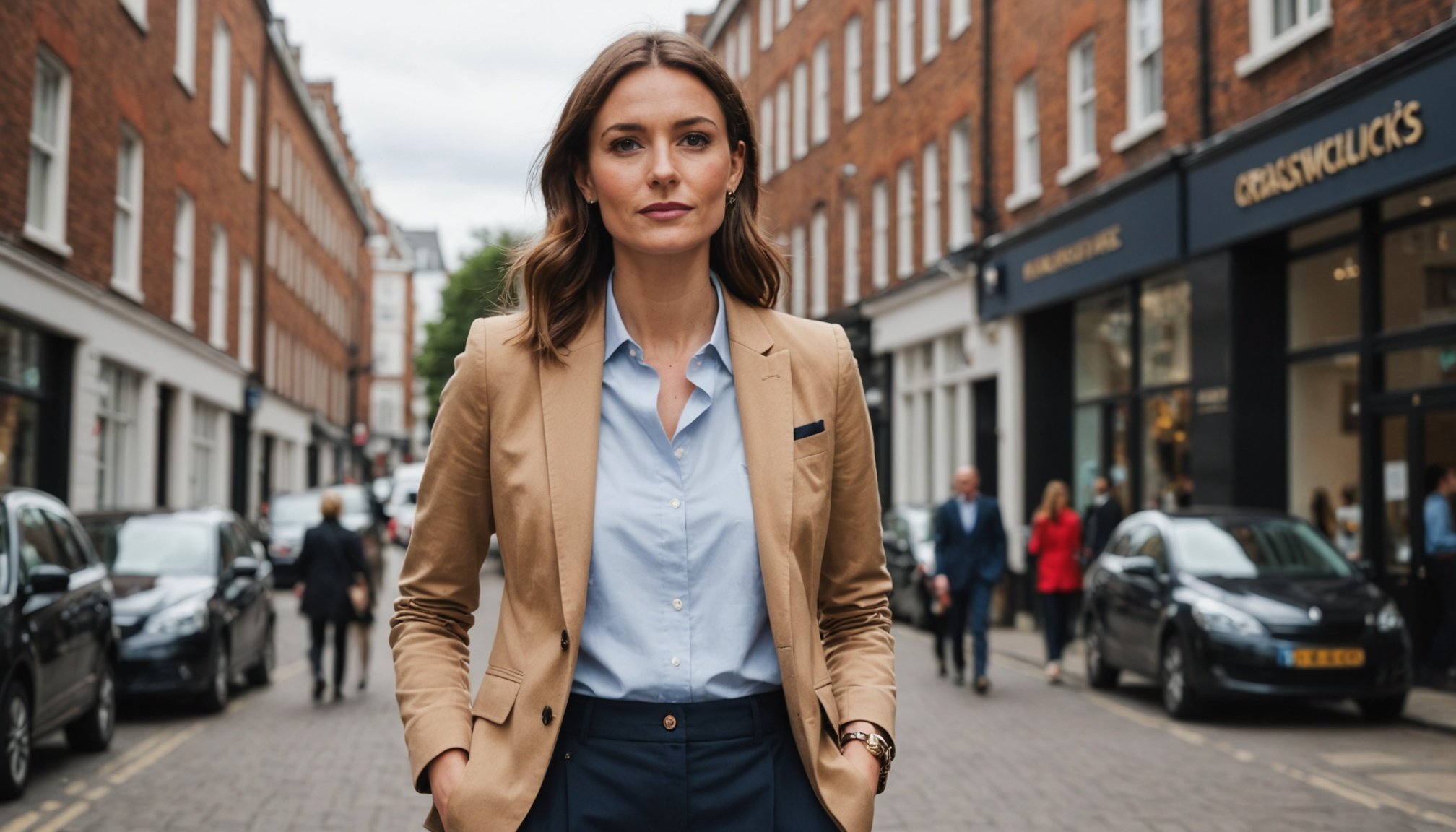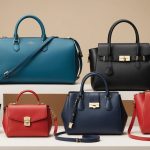Mastering Business Casual: Stylish Blazer Tips for the UK’s Creative Sectors
In the ever-evolving landscape of workplace attire, the concept of business casual has become a staple, especially in the UK’s creative sectors. This dress code strikes a perfect balance between comfort and professionalism, making it ideal for industries that value innovation and self-expression. Here’s a comprehensive guide on how to master the business casual look, with a special focus on stylish blazer tips.
Understanding Business Casual
Before we dive into the specifics of blazers, it’s essential to grasp what business casual entails. Business casual is a dress code that is less formal than traditional business attire but still maintains a professional appearance. It allows for more flexibility in clothing choices while ensuring that the overall look remains polished and appropriate for the workplace[4].
Have you seen this : Ultimate Guide to Elegant Attire for an Unforgettable Evening at London’s Royal Opera House Gala
In creative sectors like tech, design, and media, business casual is often the norm. This dress code reflects the industry’s emphasis on comfort, creativity, and personal style. For instance, in a tech startup, you might see employees wearing chinos, oxford shirts, and blazers, which is a far cry from the formal suits and ties of traditional corporate environments[2].
The Role of Blazers in Business Casual
Blazers are a versatile and essential component of any business casual wardrobe. Here’s why they are so valuable and how you can incorporate them into your look.
In parallel : Choosing the Ultimate Waterproof Picnic Blanket Materials for the British Climate: A Comprehensive Guide
Why Blazers Are a Must-Have
Blazers can instantly elevate a casual outfit into a professional one. They add a layer of sophistication and can be easily paired with a variety of bottoms, from dress pants to chinos or even jeans in more relaxed settings.
“Blazers are a great way to dress up a more casual outfit. Look for a classic style in a neutral color like navy or gray, and make sure it fits well,” advises a fashion expert from Vilavia[4].
Choosing the Right Blazer
When selecting a blazer, several factors come into play:
- Color: Neutral colors like navy, gray, and beige are versatile and can be paired with almost any outfit. These colors are timeless and will not go out of style quickly[4].
- Fit: A well-fitted blazer is crucial. It should be tailored to your body, neither too tight nor too loose. A good fit ensures that you look polished and professional.
- Fabric: Opt for high-quality fabrics like wool or cotton. These materials are durable and maintain their shape well.
- Style: Classic styles are always a safe bet, but you can also experiment with slightly more modern designs, such as slim-fit blazers or those with subtle patterns.
Styling Your Blazer for Different Occasions
The beauty of a blazer lies in its versatility. Here are some tips on how to style your blazer for various occasions within the creative sectors:
For Men
- Pair with Chinos and an Oxford Shirt: A classic combination that works well for most office settings. Choose a light-colored oxford shirt and pair it with dark chinos for a sharp look.
- Example: A navy blazer with light blue oxford shirt and dark gray chinos.
- Add a Polo Shirt for a Casual Look: For a more relaxed setting, swap the oxford shirt for a polo shirt. This is perfect for creative agencies or tech startups.
- Example: A gray blazer with a white polo shirt and beige chinos.
- Layer Over a Sweater: For colder days, layering a blazer over a sweater can add a touch of sophistication.
- Example: A navy blazer over a gray sweater with dark gray trousers.
For Women
- Pair with a Blouse and Tailored Trousers: A classic combination that exudes professionalism. Choose a blouse that complements the color of your blazer.
- Example: A black blazer with a white blouse and tailored black trousers.
- Add a Cardigan for a Layered Look: Layering a cardigan under a blazer can add depth to your outfit.
- Example: A gray blazer over a white cardigan with a black skirt.
- Wear Over a Dress: Blazers can also be worn over dresses for a more polished look.
- Example: A navy blazer over a white dress with black tights.
Balancing Comfort and Professionalism
One of the key challenges of business casual is balancing comfort and professionalism. Here are some tips to ensure you achieve this balance:
Comfortable Yet Professional Bottoms
- Chinos: Chinos are a great alternative to dress pants. They are comfortable and can be dressed up or down.
- Example: Pair dark chinos with a white oxford shirt and a navy blazer for a professional look.
- Tailored Trousers: Tailored trousers are another option that offers both comfort and professionalism.
- Example: Pair black tailored trousers with a white blouse and a black blazer.
Footwear
- Loafers: Loafers are a great choice for men and women. They are comfortable and can be dressed up or down.
- Example: Pair loafers with chinos and an oxford shirt for a polished look.
- Flats: For women, flats are a comfortable and stylish option.
- Example: Pair flats with a skirt and a blouse for a professional yet comfortable look.
Managing the Fine Line Between Casual and Too Casual
While embracing a relaxed dress code, it’s crucial to maintain the balance between casual and too casual. Here are some guidelines to help you navigate this fine line:
Clear Guidelines
- Establish clear guidelines on what is acceptable in the workplace. This can include defining what can be worn in client-facing situations versus internal meetings[2].
Lead by Example
- HR professionals and managers should set an example by dressing according to the new guidelines. This demonstrates that the dress code is part of the office culture[2].
Phase the Changes
- Gradually introduce the new dress code to allow employees time to adjust. Start with casual Fridays or a more flexible summer dress policy and assess how these changes affect the office atmosphere[2].
Practical Insights and Actionable Advice
Here are some practical tips and actionable advice to help you master the business casual look:
Know Your Industry
- Understand the dress code norms of your industry. For example, tech startups may be more casual than law firms or financial institutions[3].
Observe Your Colleagues
- Pay attention to how your colleagues dress. This will give you a good idea of what is acceptable in your workplace[3].
Invest in Quality Pieces
- Invest in high-quality, versatile pieces that can be mixed and matched to create multiple outfits.
- Example: A good blazer, a few oxford shirts, and a pair of well-fitted chinos can form the basis of a solid business casual wardrobe.
Dress for the Occasion
- Adjust your outfit according to the occasion. For client-facing meetings, opt for a more formal business casual look, while internal meetings can be more relaxed.
- Example: Wear a full suit for important client meetings but opt for a blazer and chinos for internal team meetings.
Detailed Bullet Point List: Essential Items for a Business Casual Wardrobe
Here is a list of essential items to build a comprehensive business casual wardrobe:
For Men:
- Blazers: Navy, gray, and beige
- Oxford Shirts: White, light blue, and pastel colors
- Polo Shirts: White, navy, and black
- Chinos: Dark gray, beige, and navy
- Dress Pants: Black, navy, and gray
- Shoes: Loafers, brogues, and dress boots
- Sweaters: Crewneck and V-neck in neutral colors
- Belt: Leather belt in black or brown
For Women:
- Blazers: Navy, gray, and beige
- Blouses: White, light blue, and pastel colors
- Sweaters: Crewneck and V-neck in neutral colors
- Tailored Trousers: Black, navy, and gray
- Skirts: Knee-length in black, navy, and gray
- Shoes: Flats, loafers, and low heels
- Dresses: Simple dresses in neutral colors that can be layered with a blazer
Comprehensive Table: Comparing Business Casual and Smart Casual
Here is a table comparing business casual and smart casual dress codes to help you understand the subtle differences:
| Dress Code | Description | Appropriate Attire | Occasion |
|---|---|---|---|
| Business Casual | Less formal than traditional business attire but still professional | Blazers, dress pants, skirts, oxford shirts, chinos | Most office settings, client meetings |
| Smart Casual | More relaxed than business casual, but still polished | Jeans, chinos, blouses, sweaters, loafers | Casual Fridays, social events, some job interviews |
Quotes and Anecdotes
“Business casual attire is all about finding that perfect balance between comfort and professionalism. It’s about expressing your personal style while respecting the company’s ethos and culture,” says a fashion consultant.
For instance, consider the story of Sarah, a graphic designer at a creative agency. She often wears a navy blazer over a white blouse with black tailored trousers, which makes her look polished and professional without compromising on comfort. “I love how versatile my blazer is. It can instantly dress up any outfit and make me feel confident and ready for any meeting,” she says.
Mastering the business casual look, especially in the UK’s creative sectors, is all about understanding the nuances of this dress code and incorporating stylish blazers into your wardrobe. By balancing comfort and professionalism, observing industry norms, and investing in quality pieces, you can create a versatile and polished business casual wardrobe. Remember, the key is to look professional without losing your personal style, making you feel confident and ready to take on any challenge in the workplace.
Pairing Blazers with Other Attire
Blazers are versatile pieces that can be effortlessly incorporated into various outfit combinations, offering numerous options for both smart casual and formal looks. When choosing bottoms, consider pairing blazers with trousers for a polished appearance. Opt for well-tailored pieces, such as chinos or dress pants, to maintain a sleek silhouette. For a feminine touch, skirts—especially pencil or A-line styles—provide a balanced aesthetic.
Layering is key to maximizing a blazer’s versatility. Underneath, a crisp shirt or sleek turtleneck adds sophistication. In cooler months, experiment with layering a fine-knit jumper. Over top, a stylish scarf or light trench can add dimension and warmth, creating an effortlessly chic ensemble.
Footwear plays a crucial role in completing a blazer-centered outfit, enhancing the overall aesthetic. Pair with classic loafers or oxfords for a formal vibe, or consider sleek trainers to maintain a casual edge. For a more daring look, ankle boots or heels can add a fashionable twist.
Remember, blazers can be adapted to suit different occasions with ease, so don’t hesitate to experiment with this wardrobe staple.











